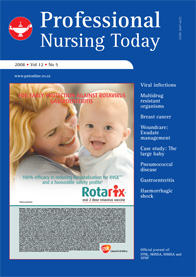ABCs of haemorrhagic shock in the pregnant woman
Keywords:
Mother and child health, Midwifery
Abstract
Haemorrhagic shock is more common in the pregnant woman than generally acknowledged in the clinical setting. In most cases antepartum and postpartum haemorrhage can be managed effectively by concentrating on the management of the obstetrical cause of the bleeding. A midwife should have the appropriate knowledge and skills to recognise the signs and symptoms of haemorrhagic shock, to manage the condition systematically and effectively, and to prevent potential lifethreatening complications. A brief overview of haemorrhagic shock is discussed. The midwife is provided with a systematic guideline that should be used to assess and manage the obstetric woman presenting with haemorrhagic shock. The ABC (Airway, Breathing, and Circulation) include the key life-saving aspects that need to be considered when a pregnant woman presents with haemorrhagic shock. Clinical notes are added to enhance theory-practice correlation.
Published
2008-08-14
Issue
Section
Mother and Child Health
By submitting manuscripts to PNT, authors of original articles are assigning copyright to Medpharm Publications (Pty) Ltd. Authors may use their own work after publication without written permission, provided they acknowledge the original source. Individuals and academic institutions may freely copy and distribute articles published in PNT for educational and research purposes without obtaining permission.

